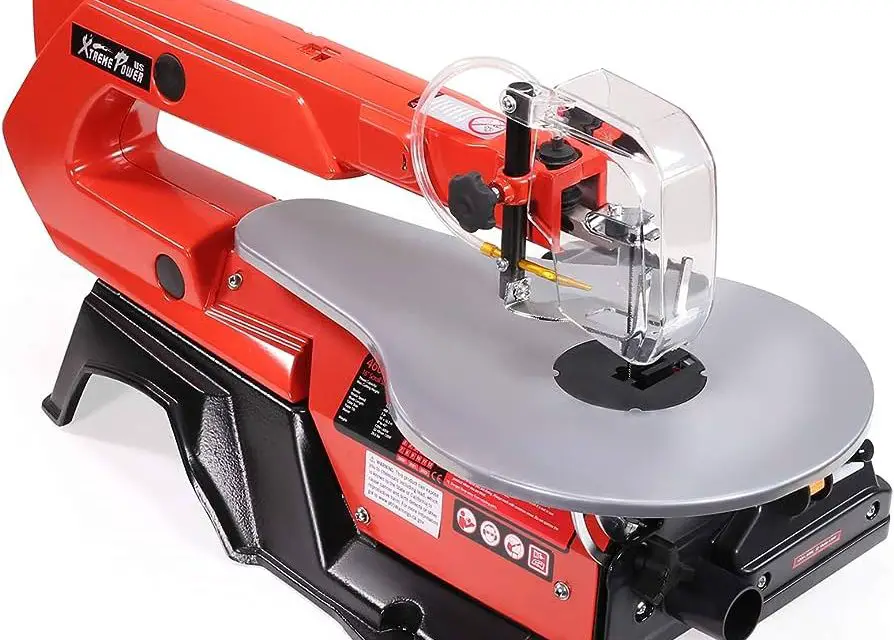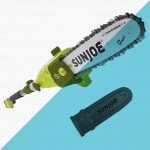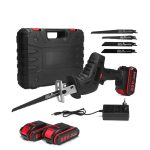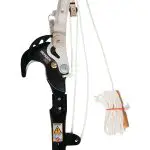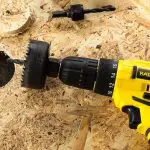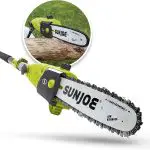A band saw works by using a continuous loop of metal with sharp teeth to cut materials. It is a versatile tool that can accurately slice thin and dense materials.
This tool is commonly used in woodworking, metalworking, and various other industries. A band saw is able to make straight cuts, curved cuts, and even intricate designs. It is a highly efficient and precise cutting tool that allows for greater control and accuracy compared to other cutting methods.
With its versatility and ability to cut a wide range of materials, the band saw is an essential tool for any workshop or professional setting.
Understanding The Fascinating Mechanism
A band saw is a fascinating tool that operates on a simple yet efficient mechanism. It consists of several key components that work together to deliver precise cuts. The basic structure of a band saw includes a motor, a drive wheel, a blade, and a worktable.
The motor drives the rotation of the drive wheel, which in turn causes the blade to move in a continuous loop. As the blade moves, it glides along the worktable, allowing users to guide the material through the cutting process.
The blade’s sharp teeth make contact with the material, gradually slicing through it with each pass. This operating principle allows band saws to cut a variety of materials, including wood, metal, plastic, and more. Whether you’re a woodworking enthusiast, a metal fabricator, or a DIY hobbyist, understanding how a band saw works is key to unlocking its full potential and achieving accurate cuts.
Band Saw Blades: The Cutting Edge
A band saw operates by utilizing a continuous loop of metal with razor-sharp teeth to cut through various materials. This versatile tool is capable of slicing thin and dense materials with precision. The cutting edge of a band saw blade allows for accurate cuts in a wide range of materials.
When it comes to the types of band saw blades available, there are various options to choose from. Selecting the right band saw blade is crucial for achieving desired results in different cutting applications. It is also important to prioritize band saw blade maintenance to ensure optimal performance and longevity.
Regular cleaning, proper tensioning, and lubrication are essential for keeping the blade in excellent condition. By understanding how a band saw blade works and implementing proper maintenance practices, you can enhance productivity and achieve high-quality cutting results.
Getting The Best Results With A Band Saw
A band saw works by utilizing a continuous loop of metal with sharp teeth to cut materials. Adjusting the blade tension is crucial in getting the best results with a band saw. Proper blade tracking ensures that the blade follows a straight line while cutting.
Setting up the blade guides properly helps in stabilizing the blade during the cutting process. By maintaining the right tension, tracking, and blade guides, you can ensure a smooth and accurate cutting experience with your band saw.
Advanced Techniques With A Band Saw
A band saw is a versatile tool that uses a continuous loop of metal with sharp teeth to cut materials. It is capable of cutting both thin and dense materials with accuracy. One advanced technique with a band saw is resawing, which involves cutting thinner boards from thick stock.
This technique allows for maximizing the use of materials by creating multiple thinner boards. Another technique is cutting curves and shapes, which enables the saw to create intricate and unique designs. Additionally, a band saw can be used for ripping, crosscutting, and making miters, providing precise and clean cuts.
With its various capabilities, a band saw is a valuable tool for woodworkers and other professionals in need of accurate and efficient cutting.
Band Saw Safety Tips
A band saw works by using a continuous loop of metal with sharp teeth to cut materials. It is a versatile tool that can cut thin and dense materials, creating accurate slices. When operating a band saw, it is essential to prioritize safety.
Some safety precautions to follow include wearing personal protective equipment (PPE) such as safety glasses, gloves, and ear protection. Additionally, it is important to be aware of common band saw safety hazards, such as blade breakage and kickback. Always ensure the blade is properly tensioned and aligned before using the band saw.
Avoid loose clothing and jewelry that can get caught in the machine. By following these safety precautions, you can operate a band saw effectively and protect yourself from potential accidents.
Frequently Asked Questions For How Does A Band Saw Work?
How Does The Band Saw Cut Material?
A band saw cuts material using a continuous loop of metal with sharp teeth. The tool is versatile and can accurately slice thin and dense materials. This cutting process allows for precise and efficient cuts with minimal waste. Band saws are commonly used in woodworking, metalworking, and other industries that require precision cutting.
They can handle various materials, including wood, metal, plastic, and even bone. With the right blade and adjustments, a band saw can make straight cuts, curves, and even intricate shapes. Overall, the band saw is a powerful tool that offers versatility and accuracy in cutting a wide range of materials.
What Is A Band Saw Good For?
A band saw is a versatile tool that is good for cutting thin and dense materials with accuracy. It uses a continuous loop of metal with sharp teeth to make precise slices. The band saw can cut a variety of materials such as wood, metal, plastic, and even bone.
It is commonly used in woodworking shops, metalworking shops, and construction sites. With its ability to make straight cuts, curved cuts, and resawing (splitting thick pieces into thinner ones), the band saw is a valuable tool for creating intricate shapes and designs.
It is also popular for cutting irregular shapes and making internal cuts, making it an essential tool for any craftsman or DIY enthusiast.
What Is The Difference Between A Power Saw And A Band Saw?
A power saw and a band saw differ in their cutting mechanisms. A power saw uses a rotating blade to cut materials, while a band saw utilizes a continuous loop of metal with sharp teeth. This loop, known as a band, is stretched around wheels and moves continuously as it cuts through the material.
The main advantage of a band saw is its versatility. It can cut thin and dense materials accurately, making it a popular tool for woodworking and metalworking projects. The continuous loop of the band saw blade allows for intricate and curved cuts to be made with ease.
In summary, a power saw uses a rotating blade, while a band saw utilizes a continuous loop of metal with sharp teeth. The band saw’s cutting mechanism makes it a versatile tool for cutting various materials accurately.
Conclusion
A band saw is a versatile tool that is capable of cutting a wide range of materials accurately. Its continuous loop of metal with sharp teeth allows for precise and efficient slicing of both thin and dense materials. Whether you need to cut wood, metal, plastic, or even bone, a band saw is up to the task.
One of the key advantages of a band saw is its ability to create intricate curves and shapes. This makes it a popular choice among woodworkers, metalworkers, and DIY enthusiasts who require precise and detailed cuts. Additionally, the adjustable blade speed and blade tension allow for customization based on the specific material being cut.
Understanding how a band saw works provides valuable insight into its capabilities and usefulness in various industries. Whether you’re a professional craftsman or a hobbyist, knowing how to operate a band saw opens up a world of possibilities for creating intricate and accurate cuts in a variety of materials.

